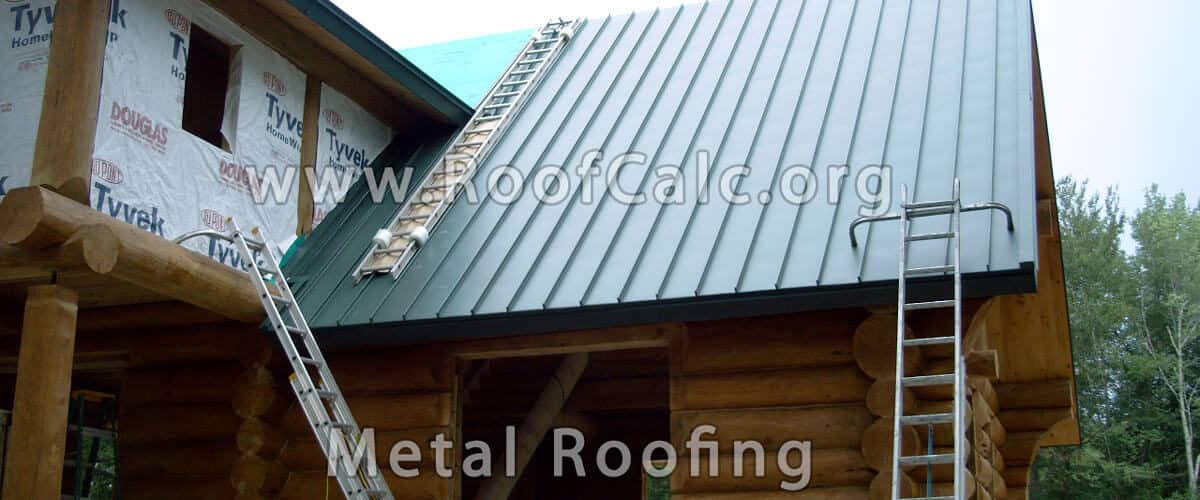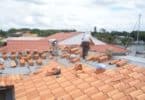Roofing is one of the more complicated and expensive home improvement projects that homeowners will face. What kind of roofing material to use and which contractor to hire to do the just a couple of the decisions homeowners face regarding a new roof. The National Roofing Contractors Association suggests using the following formula when considering roofing options: total cost of materials and labor divided by the life expectancy in years of materials equals the annual roofing cost. The metal roofing price of a new roof will be dependent on materials, contractor, residential or commercial building, location, labor rates, warranty, and time of year, among other things. Price of materials is only one aspect of the total cost of a new roof.
There are many kinds of roofing materials that homeowners, building owners, contractors, and architects can choose from for new or replacement roofing. Sometimes, local building codes will restrict choices of materials that can be used. Different materials provide different benefits and have different uses, and costs vary. But from a strictly economic standpoint, metal roofing offers a better return on investment than asphalt and wood shingles because it lasts two to three times longer, and has additional eco-friendly aspects as well.
Corrugated metal roofing and standing seam metal roofing are two types of metal roofing. Corrugated is generally used for agricultural buildings like industrial buildings and pole barns. Standing seam metal roofing is generally used for residential buildings. Metal roofing can also be formed into interlocking sheets and shingles. Metal roofing is made from steel, copper, zinc, aluminum, or stainless steel, with copper and steel on the more expensive end of the cost spectrum.
Metal roofing has many advantages over other types of roofing materials. It is flexible, lightweight, and fire resistant, and comes in shingles, large sheets, and panels that can be designed to look like asphalt shingles, clay tile, wood, or slate. Metal roofing is also eco-friendly, a green building material that is recyclable and long-lasting, 50 to 75 years compared to asphalt or wood shingles which last from 15 to 25 years. Metal roofing has a high strength to weight ratio, is attractive, and is versatile for shaped design features like cupolas and curves. The Cool Metal Roofing Coalition and the Oak Ridge National Laboratory reports that installing reflective metal roofing can save up to 40% on summer cooling costs, costing less, using less energy, and generating less pollution. Metal roofing has some drawbacks not found in other roofing materials, such as noise considerations, and re-coating maintenance to prevent rusting.
There are many factors that make up the total per-foot cost of metal roofing, which will vary in different geographical areas. Metal roofing materials are graded by the thickness of coating, with thicker coating, the higher grade and longer the roof will last. Generally, mid-grade metal roofing materials average $5.25 per square foot, low-grade metal roofing materials average $1.35 per square foot, and high-grade metal roofing materials average $11.00 per square foot, not including installation and material removal. Materials, size of roof, individual roof characteristics like slope, chimneys, dormers, angles, or cupolas all add to the cost of metal roofing. Copper can be one of the most expensive metal roofing materials, but can last almost indefinitely and adds beauty and luxury, making it more of an investment than a home improvement expense.
To get an idea of how much actual total metal roofing prices will come to, be prepared to comparison shop. Start by asking friends, neighbors, family, and co-workers if they’ve had roofing work done and if they liked their contractors. Ask for referrals. Then get quotes or bids from at least four or five contractors, more if possible. Make sure to check references, get written estimates, ask for proof of insurance and licensing and bonding, and do not sign anything until the contractor has been thoroughly checked out. Roofing contractor estimates will include price of materials, trim, labor, delivery, hauling, and tax. Labor costs will be more if structural repair or masonry work is required along with installation of roof materials. If costs for similar items differ significantly on estimates you get, ask the contractor to explain. The National Roofing Contractors Association has a Residential Roofing Contractor Qualification Form on their website to help homeowners check out contractors and decide on which one to hire, as well as guidelines for selecting a residential roofing contractor. Do not hesitate to ask questions and investigate contractors and their written estimates until you feel comfortable that you understand everything involved, including the total metal roofing price.
<>


